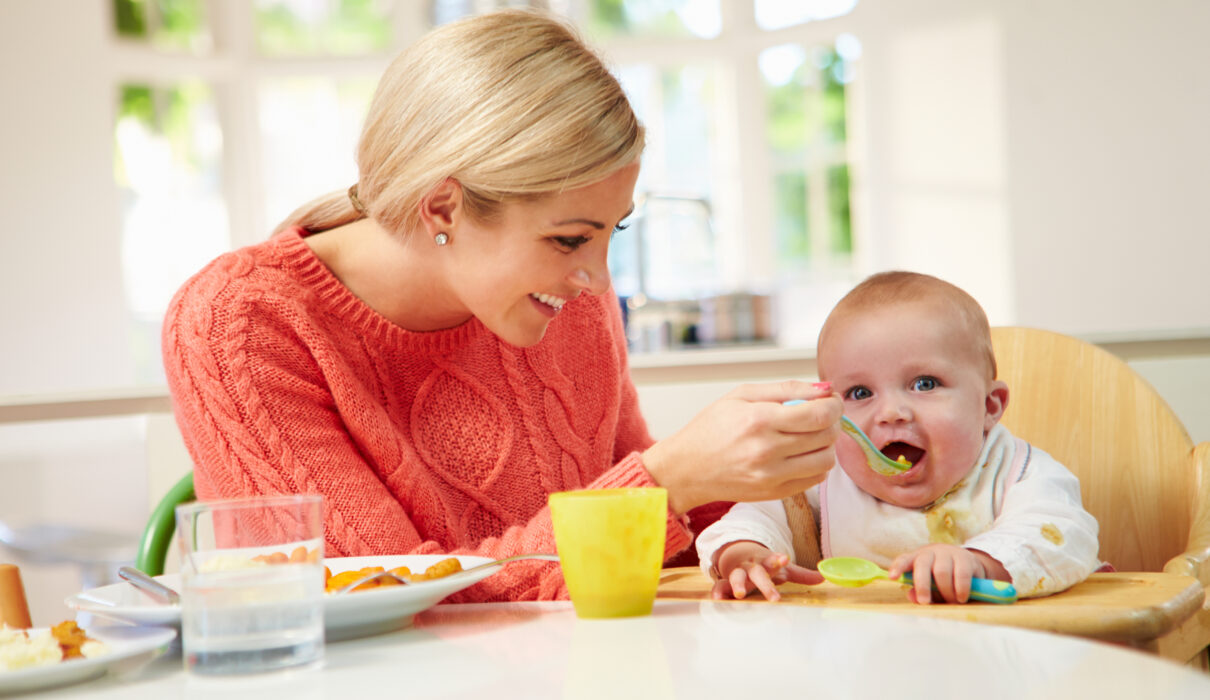One of the most exciting milestones in a baby’s life is the introduction of solid foods. For new parents, navigating this transition can be both thrilling and daunting. Knowing when to start, how to do it, and which foods to try is essential for ensuring a smooth and healthy transition for your little one. In this article, from KidsBliss, we’ll explore the key aspects of introducing solids to your baby, as well as prepping food with an all-natural fruit and vegetable cleaner and keeping hands clean with a non-toxic hand sanitiser.
When to Start
Australian Infant Feeding Guidelines recommends starting solid foods around six months of age, provided your baby is showing signs of readiness. These signs include:
- Head Control: Your baby should be able to sit upright and hold their head steady.
- Loss of Tongue Thrust Reflex: Babies are born with a natural instinct to push foreign objects out of their mouths with their tongues. When this reflex diminishes, they are ready for solids.
- Increased Appetite: If your baby seems unsatisfied after breastfeeding or bottle-feeding and still shows interest in what you’re eating, it might be a sign they’re ready for solids.
- Ability to Chew: Your baby should be able to move food to the back of their mouth and swallow.
It’s important not to start solids too early, as a baby’s digestive system may not be ready, and introducing solids too late might lead to nutrient deficiencies. Always consult with your paediatrician before introducing any new foods to your baby’s diet.
How to Start
When you’ve determined that your baby is ready, it’s time to embark on the exciting journey of introducing solids. Here’s a step-by-step guide:
- Choose the Right Time: Pick a time when your baby is not overly tired or too hungry. A calm and relaxed atmosphere will make the experience more enjoyable for both of you.
- Select the Right Seat: Place your baby in a highchair or secure them in a safe, supportive seat. Make sure they are comfortably positioned to avoid distractions.
- Start with Purees: Begin with single-ingredient purees such as rice cereal, sweet potatoes, or applesauce. These foods are easy to digest and less likely to cause allergies.
- Use a Soft Spoon: Choose a soft, rubber-tipped spoon to prevent any harm to your baby’s delicate gums. Avoid using metal spoons initially.
- Offer Small Amounts: Begin with a small amount, usually a teaspoon or two, and observe your baby’s reaction. Gradually increase the quantity as they become more accustomed.
- Be Patient: It might take a few tries for your baby to get used to the new textures and tastes. Don’t be discouraged if they initially reject certain foods.
- Introduce New Foods Slowly: Stick to one new food at a time, waiting a few days before introducing another. This allows you to monitor for any adverse reactions or allergies.
What Foods to Try
Now that you’re ready to start, it’s crucial to choose the right foods to ensure your baby receives the necessary nutrients for healthy growth and development. Here are some excellent options to consider, and remember to clean produce with a chemical-free fruit and vegetable cleaner:
- Iron-Rich Foods: Iron is crucial for brain development. Offer iron-fortified cereals, pureed meats, or legumes like lentils.
- Fruits: Start with mild fruits such as mashed bananas, pureed apples, or pears. These provide natural sweetness and essential vitamins.
- Vegetables: Introduce vegetables like sweet potatoes, carrots, and peas. These offer a variety of vitamins and minerals crucial for your baby’s health.
- Whole Grains: Once your baby is accustomed to single-ingredient purees, you can gradually introduce whole grains like oatmeal or brown rice.
- Proteins: In addition to meat, introduce protein sources like yogurt, cheese, and eggs.
- Avoid Allergens Initially: Introduce common allergens like peanuts, tree nuts, eggs, and fish one at a time, and observe your baby for any adverse reactions.
Pro tip: Even organic fruit and vegetables can have soil and contaminants on them, so be sure to properly clean everything, including knives, chopping boards, and food processors with an all-natural and effective fruit and vegetable cleaner from KidsBliss. It’s also important that your hands are very clean, so use a non-toxic hand sanitiser and rinse your hands thoroughly, especially when food inevitably ends up on the floor!
Introducing solids to your baby is a rewarding journey that fosters their development and establishes healthy eating habits. By recognising the signs of readiness, following a gradual introduction process, cleaning produce with a non-toxic fruit and vegetable cleaner from KidsBliss, and offering a diverse range of nutritious foods, you’ll set the foundation for a lifetime of healthy eating for your little one. Remember to use a non-toxic hand sanitiser and carefully wash your hands, and to consult with your paediatrician throughout this process to ensure that your baby’s unique needs are met and to address any concerns that may arise along the way. Enjoy this exciting phase and relish the joy of watching your baby explore the world of flavours and textures!


